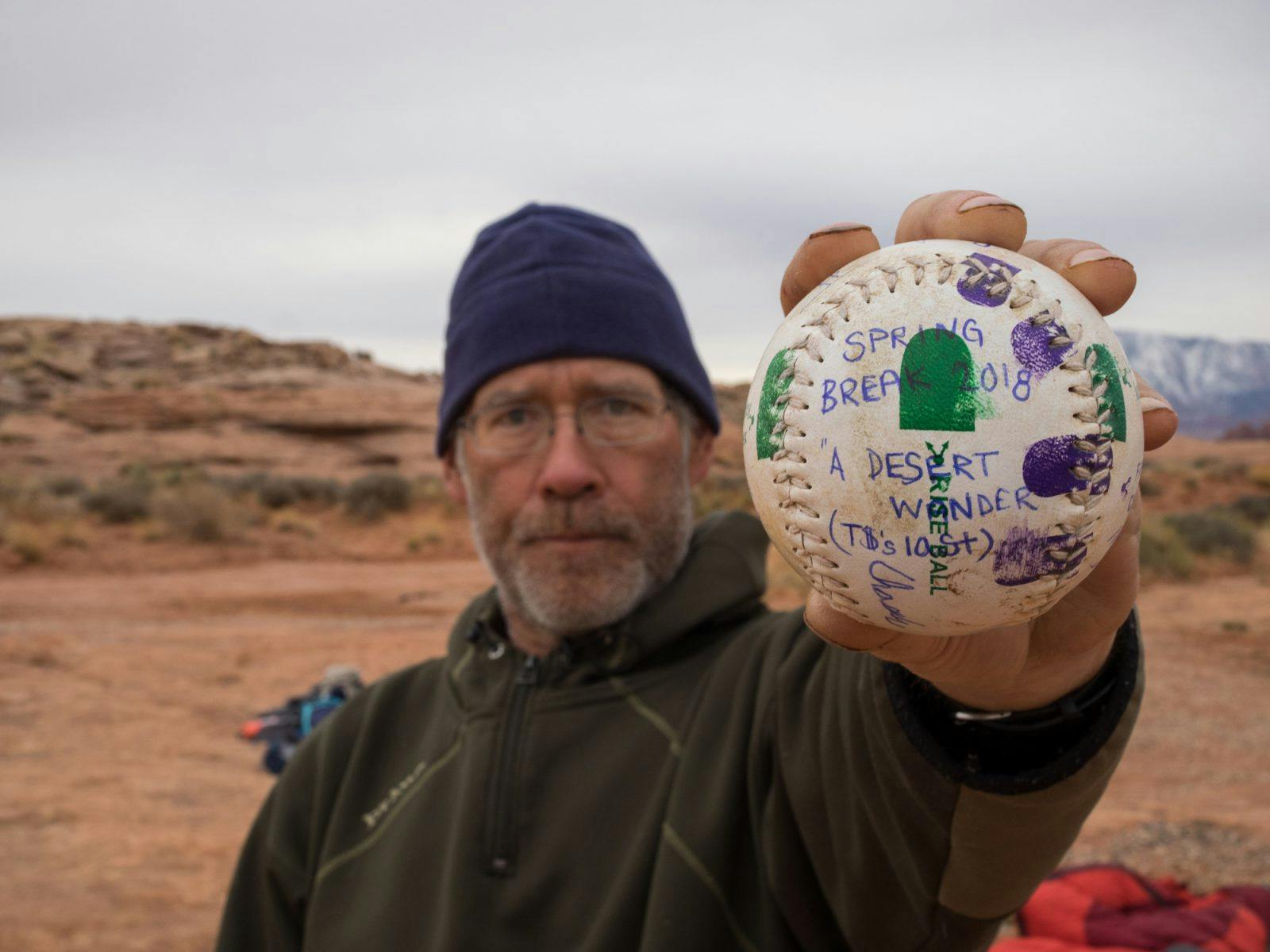10 Fort Lewis College Adventurers Hike & Packraft 80 Miles of Uninhabited Desert Country Below Clay Hills to The San Juan Arm of Lake Powell
Photos & story by Brett Davis
“For afterwards a man finds pleasure in his pains, when he has suffered long and wandered long. So I will tell you what you ask and seek to know.” ~Homer
As soon as we were fully exposed, the worry of worries came roaring out of the sky. The lone dark cloud suddenly blacked out the cobalt blue above and sent the colorful landscape into a dull indiscernible shade of grey. The steep canyon walls lost their brilliant red, orange, yellow, and brown hues. The blue green water of the lake reflected the darkness above. Looking over my shoulder, I counted the moving paddles behind me…all eight were paddling leisurely, unsuspecting of what was about to happen. Swiveling my head forward, I looked into the tempest. A half a mile off, I saw the glassy surface of the water break into a million pieces as the ripples grew in size with each passing second. Here it comes. Instinctively, my stroke became more forceful as I prepared for what I knew was going to be a violent encounter. The silence of the once still day was replaced by a dull roar as I watched the torrent of water and wind bear down upon the landscape. Just as I planted my right blade into the water in hopes of gaining some anchor from the possible abrupt capsize into the freezing water, my mind called silently out to those behind me… Hold on… Hold on…
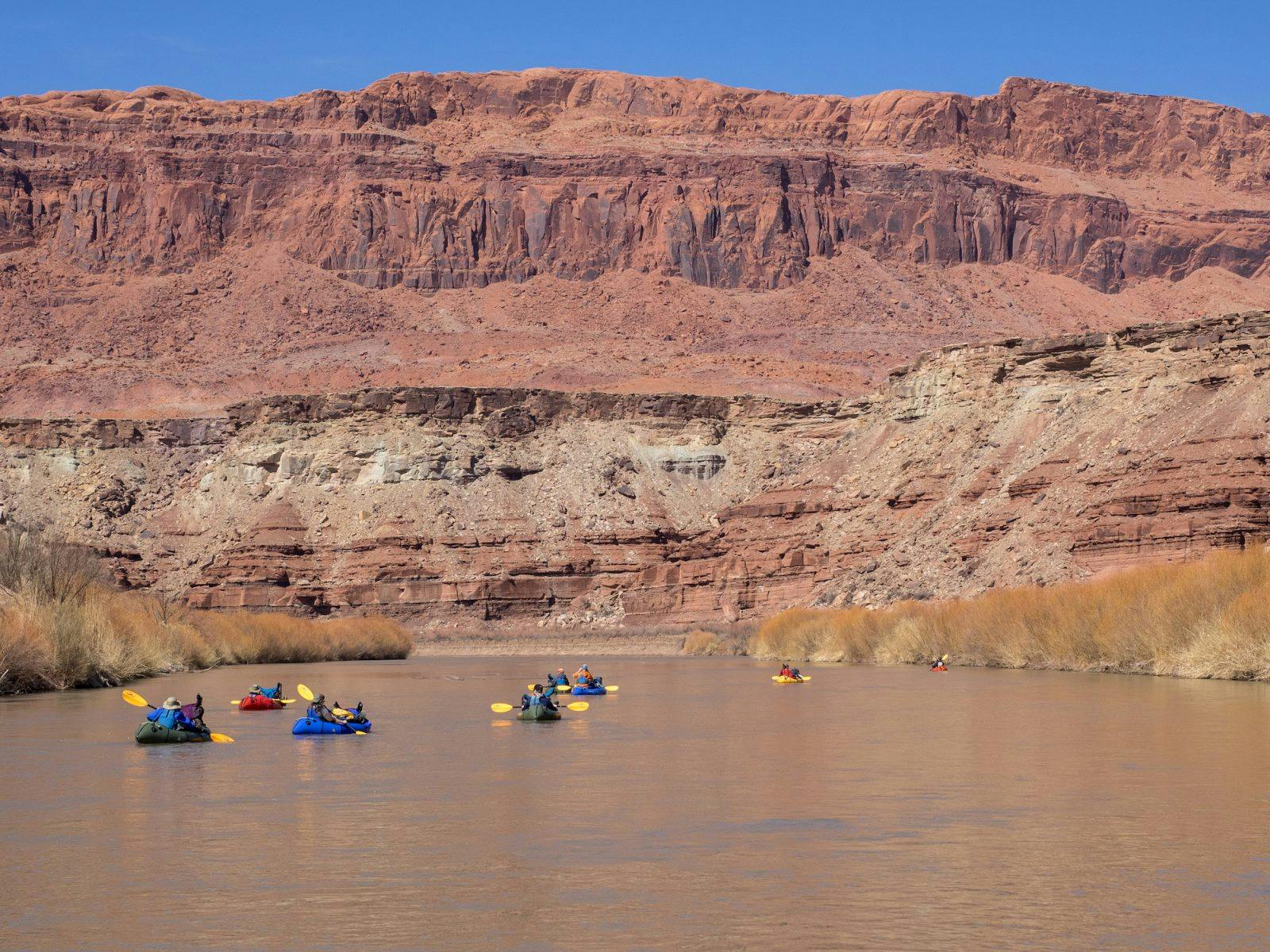
As the Director of the Outdoor Pursuits program at Fort Lewis College, I would argue that I have one of the best jobs in the country. I have the privilege to live a life of adventure by sharing my passions for the outdoors with willing and eager college students. Located in the small mountain town of Durango, Colo., our little program provides endless opportunities for the students, faculty, and staff of the college to get outside and explore our local region and beyond. From simple day hikes to summiting some of the world’s highest peaks, “OP,” as it is affectionately known around campus, has been getting after it in the world of adventure for 40 years.
Some of our more signature adventure programming takes place during the break of all breaks for college students… spring break. While many college students are heading to such party locales as South Padre Island, Panama Beach or Daytona, OP can be found heading deep into the backcountry and away from all of the debauchery and crowds. This year’s spring break was no different, as myself, my co-worker Tom Whalen (a.k.a. T$) and eight students ventured into a seldom visited part of the canyon country of southern Utah. With both packrafting and backpacking equipment we would be deposited at the end of a dusty dirt road with no significant human settlement, paved road, or even trail within 50 to 100 miles of our proposed route. Given the scope of this adventure, if disaster struck we would be on our own. A rescue would not be easy nor guaranteed in this remote, inhospitable land. Before us was a silty river flowing into an expansive lake enclosed by towering sandstone walls that were capped by a sea of slick rock domes and ever-changing sand dunes. We had eight days in which to traverse this rugged terrain in order to reach our awaiting van for the ride back to campus and the beginning of the last month and half of school. This was going to be fun.
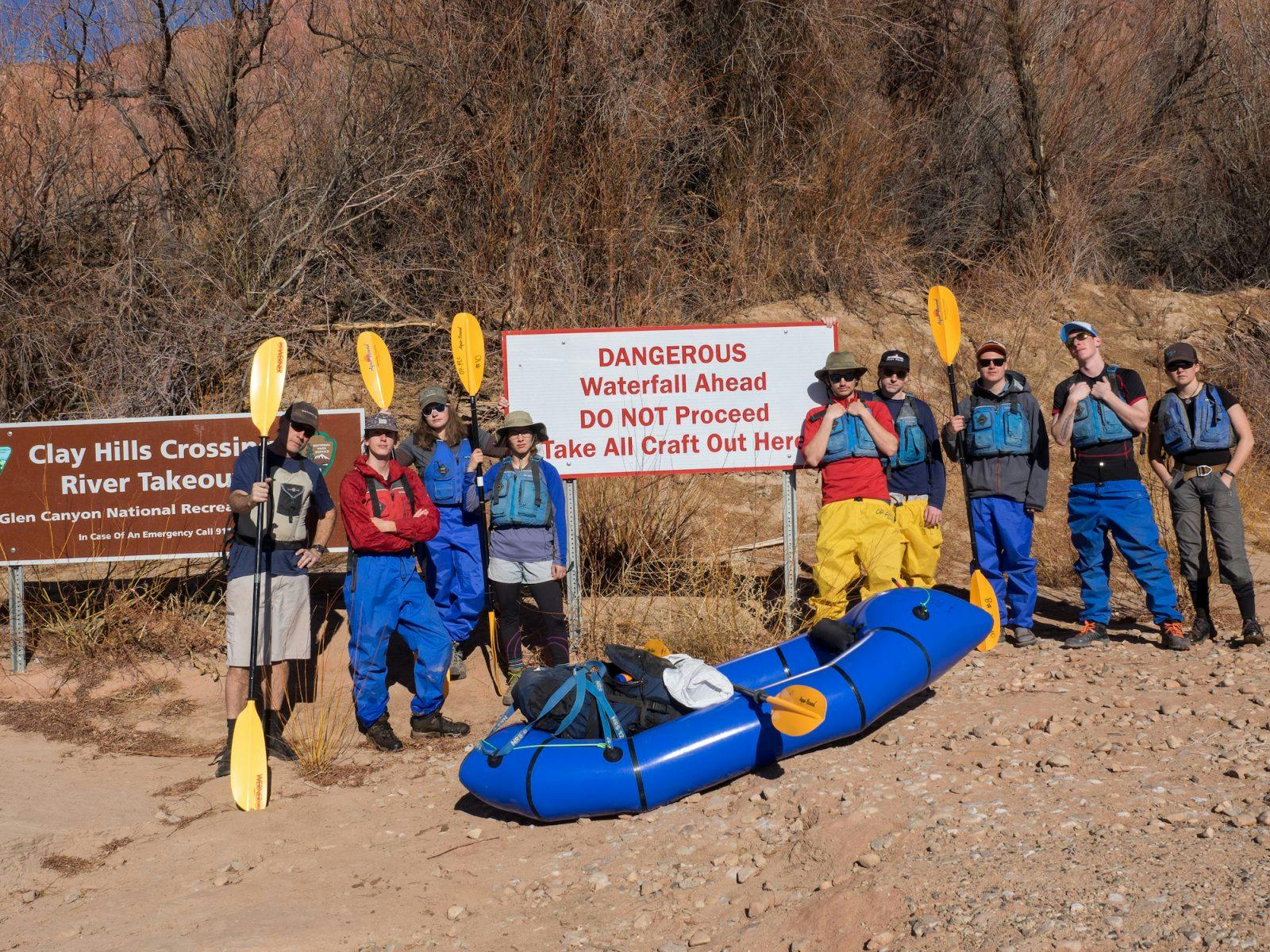
Awaking on morning one, we found ourselves filled with feelings of both anticipation and apprehension of what lay ahead. Our van had already been whisked away the previous evening to be shuttled eight hours to our designated end point. There was no going back now. With a bit of loneliness and resolve we doled out the group equipment that was strewn about in the red dirt. Students picked up bags of food, pots and pans, stoves, fuel, dromedaries, and a giant personal bag of GORP. T$ and I packed canyon ropes and webbing, a couple of harnesses, and some associated climbing gear of carabiners and belay devices. Who knew what we would encounter once we pushed away from bank.
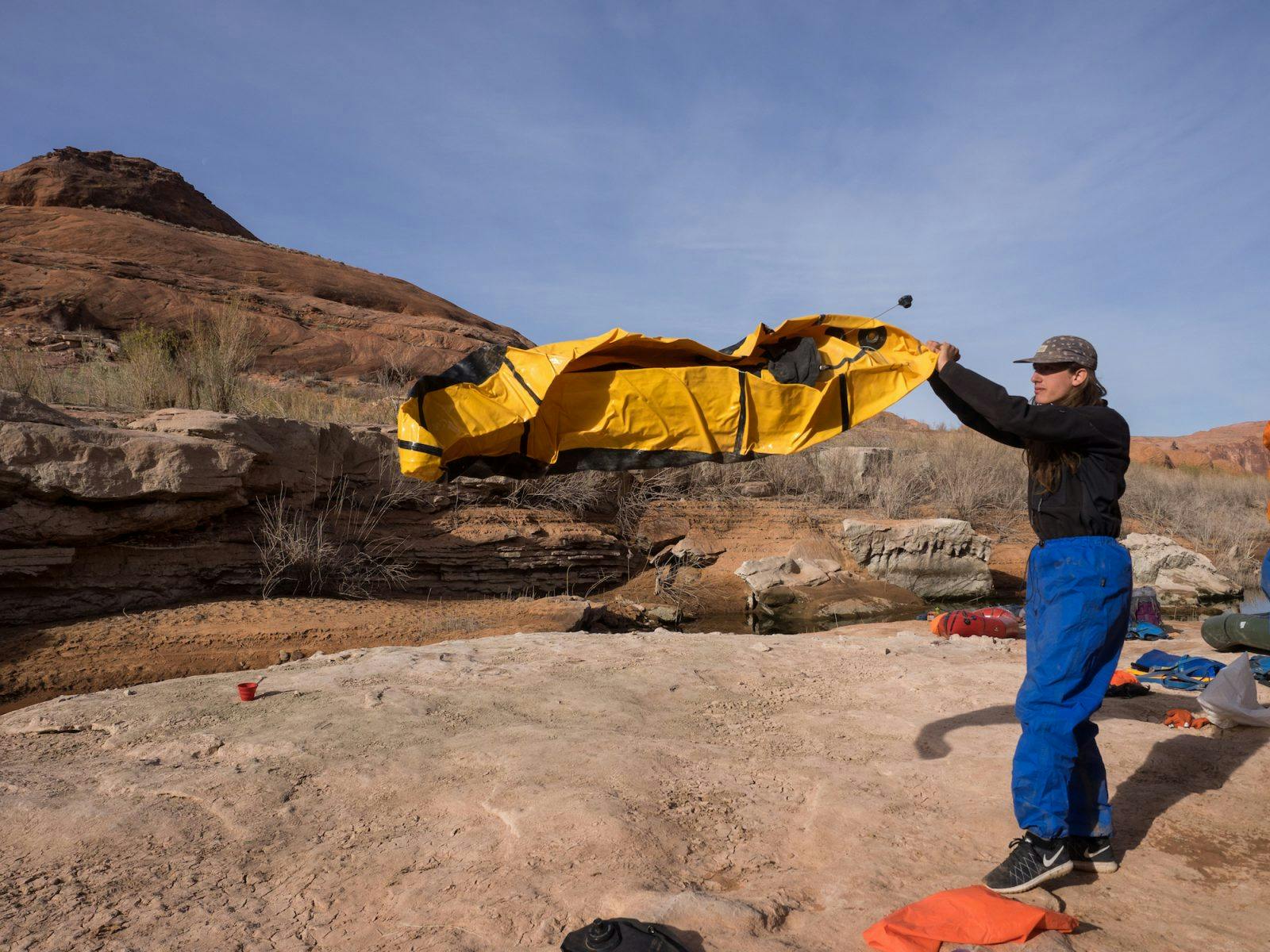
Within no time our pack rafts were weighted down with backpacks on the bow and we were wading into the river. As I took my first steps into the murky water, the magnitude of what we were attempting started to creep into my consciousness. Over the course of my career, I have spent many spring breaks in wild places from paddling along the Pacific coast of Panama to scaling the steep limestone walls of Potrero Chico, Mexico. Additionally, I have biked with students along the Arizona Trail and hiked and rappelled with them into the dark slot canyons of Grand Staircase-Escalante National Monument. Never before though, had I felt so committed than on this trip. Looking at my group of students dragging their pack rafts into the current, I wondered what they each were made of:
- How fit were they?
- What kind of inner strength did they each possess?
- How would they react once things got hard?
Unlike past objective-based trips where accomplishing a specific goal (i.e. reaching a summit) was the focus, we had not chosen our team and trained them in the skills and conditioning needed to realize our aspirations. These students were all unknowns as was the terrain ahead.
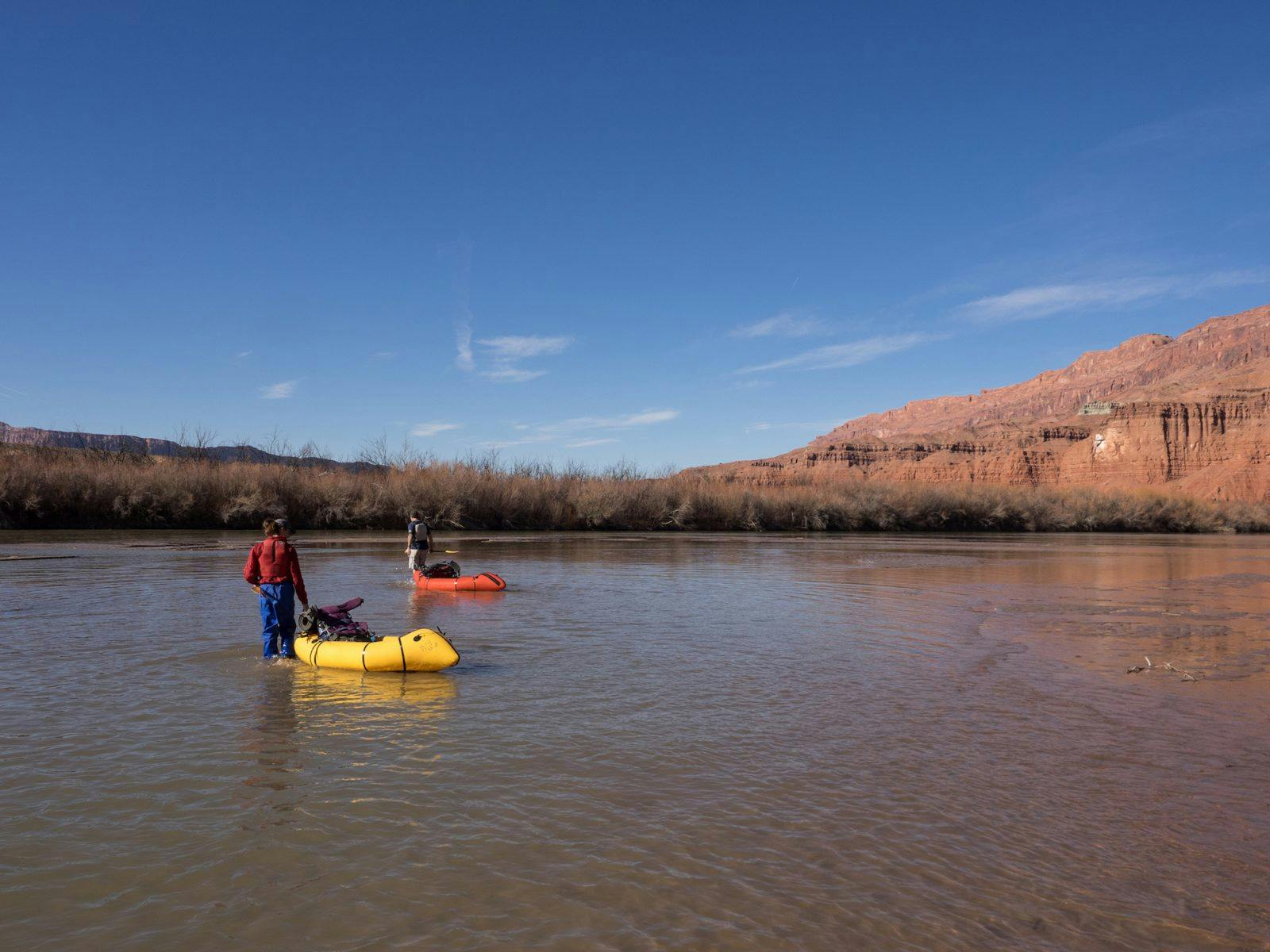
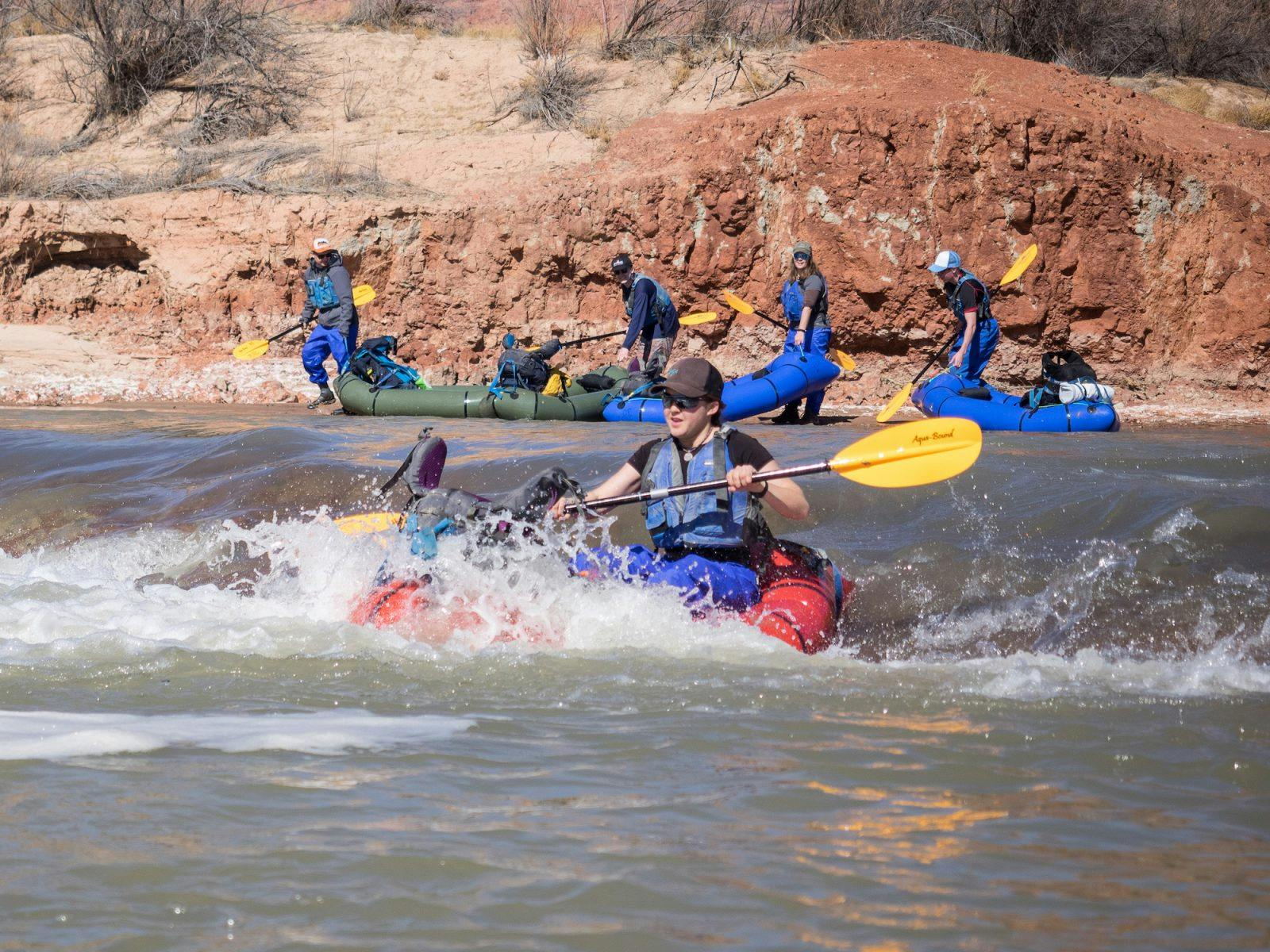
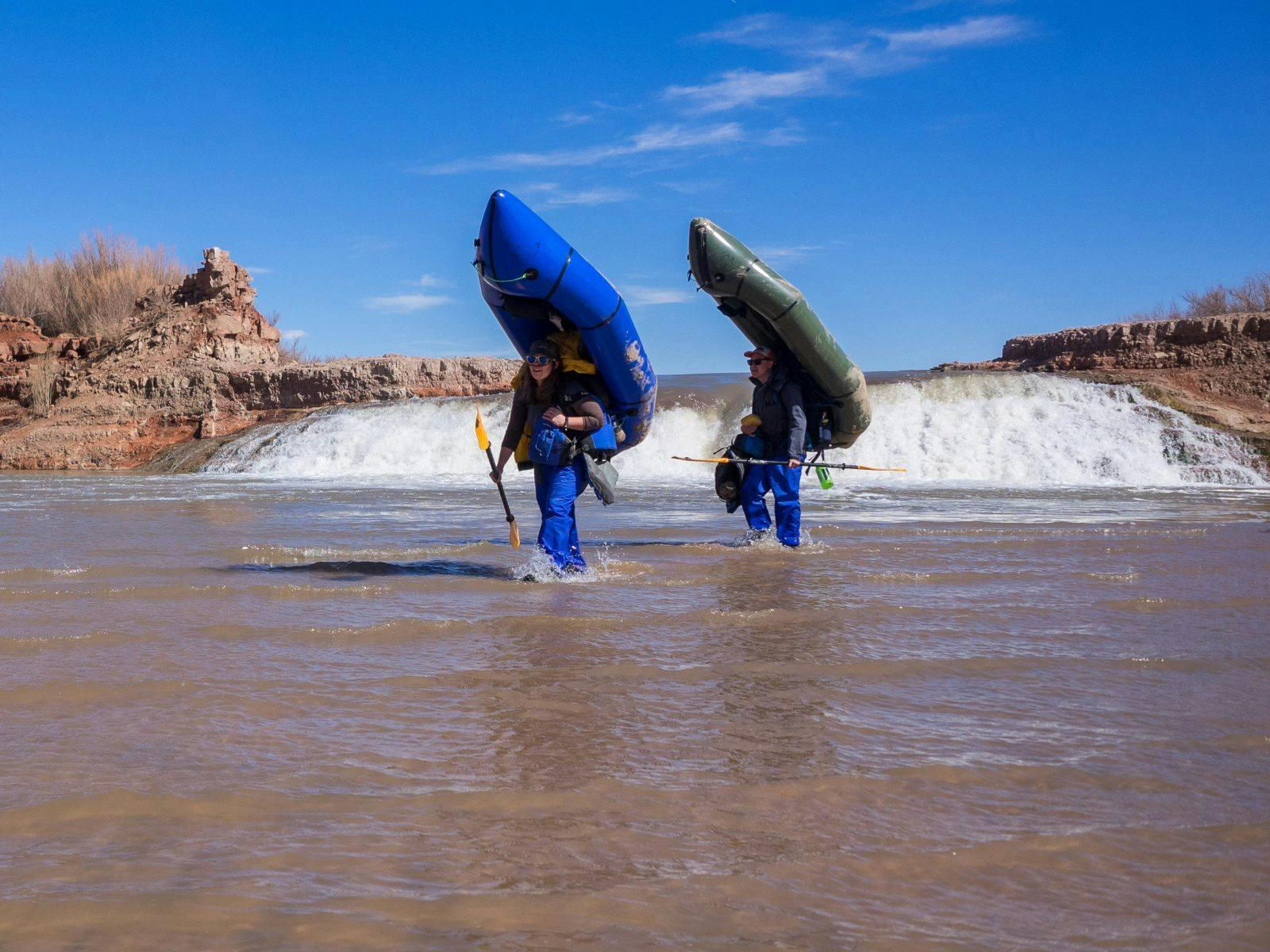
The barrage of wind and waves hit me with such ferocity that my paddle was nearly ripped from my hands. With my head down I plunged my paddle deeper into the water seeking some stable anchor point in order to prevent getting turned broadside into the fury and then inevitably flipped. Looking right and left, I searched for an escape. The recessed cove to my right looked to provide some relief from the onslaught. Expecting to see upside down boats with heads bobbing in the swell, I was surprised to see everyone still upright and struggling mightily to stay that way. Ferrying against the wind, I paddled into calm water and turned to see all but two of our team right behind me. The other two were still upright, but the wind had won the battle and was pushing them out of striking distance of the protection. Watching T$ begin the chase, I took stock of our situation. The students were cold, wet, and shaken. Pointing the group towards the shore, a student paddled over to me and casually stated, “Man, that got real for a second.” Yes, it did.
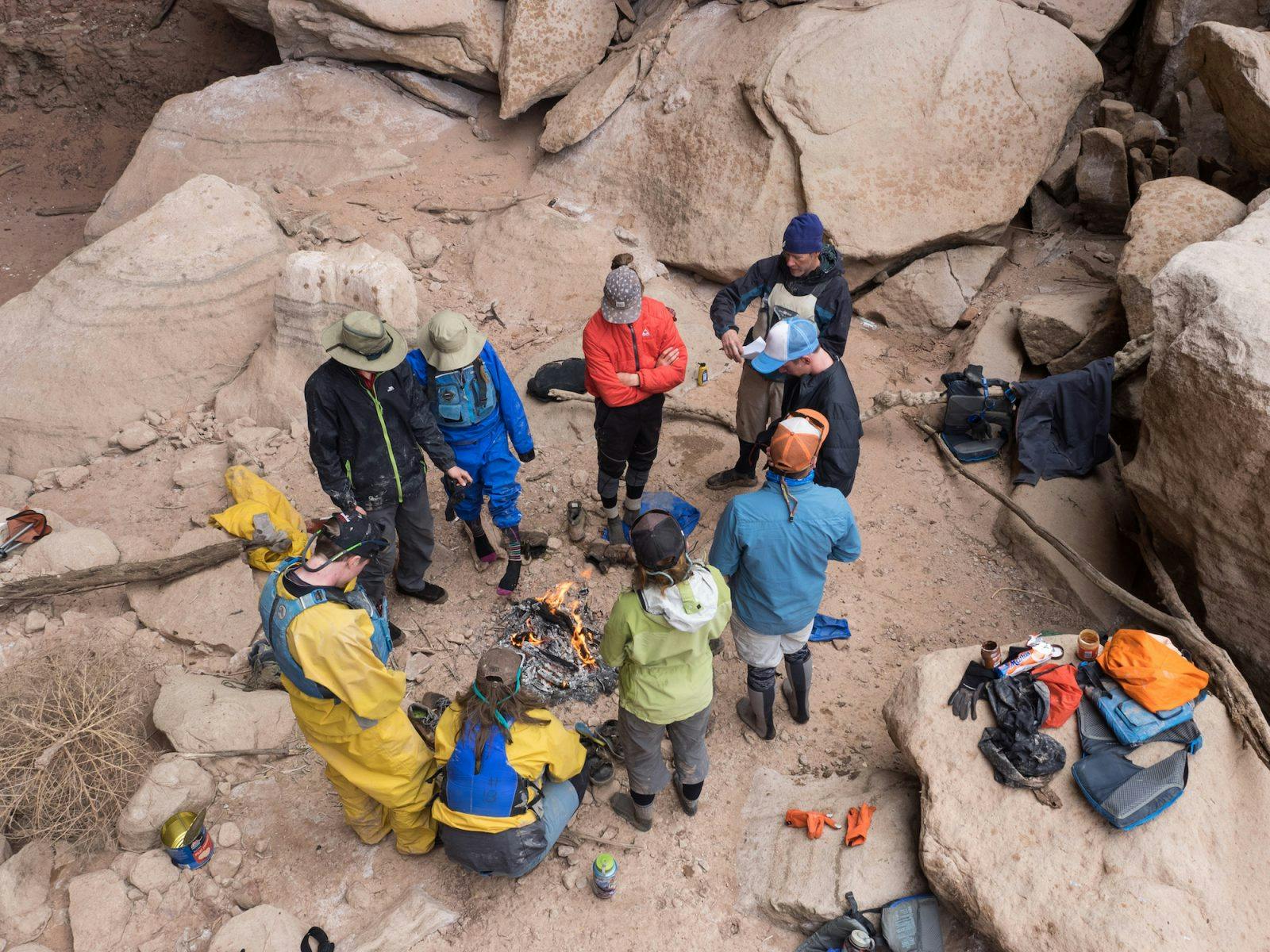
In today’s technology driven age, our world is shrinking fast on all fronts. With mini computers in our hands at all times, it is a rare moment that we don’t have instant access to information from Google or others. Similarly, in my years of travel around the globe, the instances of being in a wild place without another human soul within close proximity are become rarer and rarer. Nearly always when I think I have found my own place of solitude, a human being will emerge from the landscape out of nowhere. In recent years, my voyages with a packraft have been crucial in finding remote escapes from humanity. With these versatile vessels, I have been able to float down arctic rivers, across alpine lakes, and into mountain river canyons that few ever get to experience. A trail accessed by foot or bike is an invitation for others to follow. Water on the other hand leaves no traces of one’s passage and can be intimidating for those not versed in its ways. Given that our proposed route involved 40 miles of paddling, I had a hunch that we would encounter few if any of our kind.
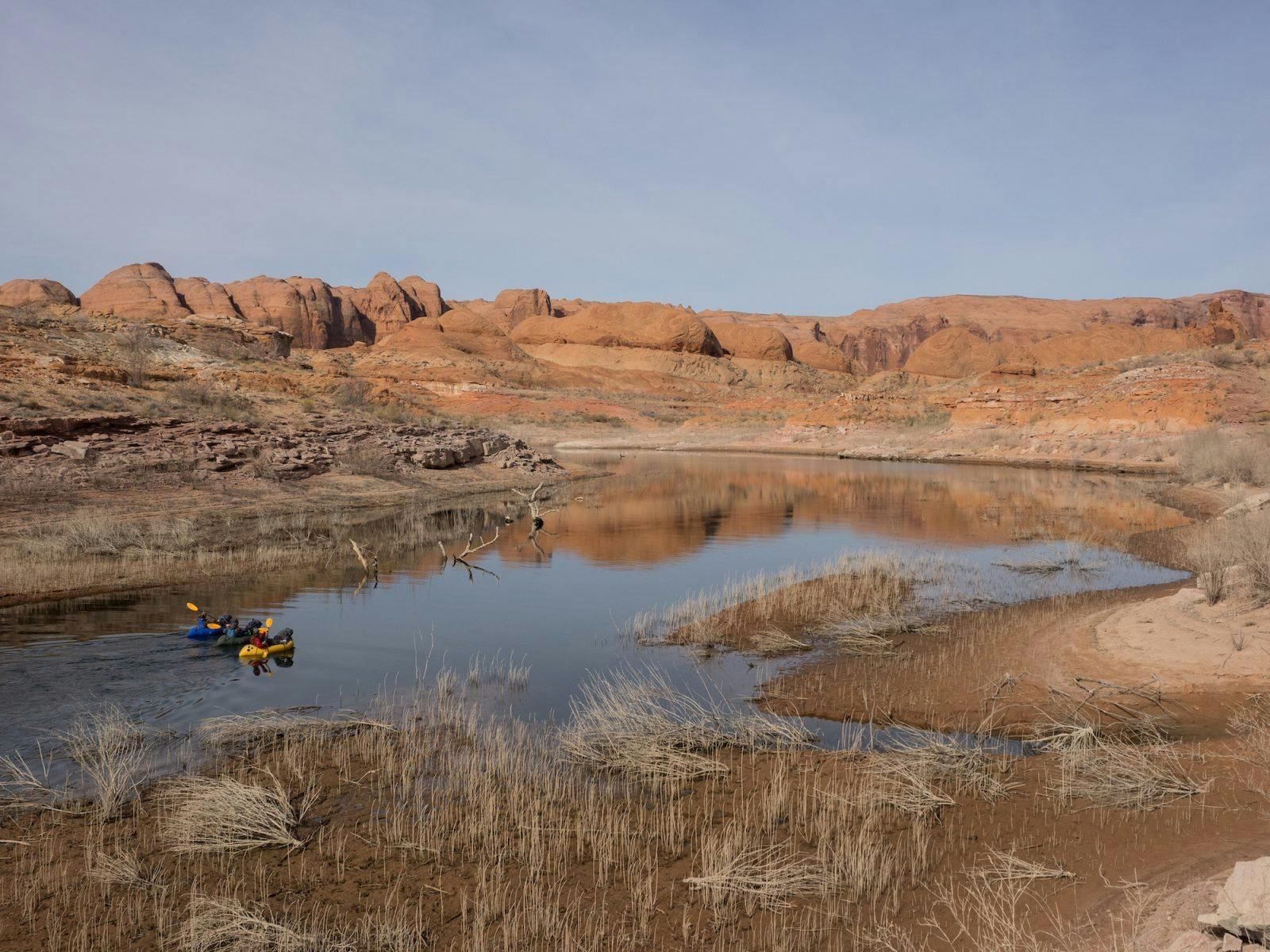
With some groaning and grimacing, the students pushed my unbearable pack up onto the rock slab. “That things a beast,” one of them grunted. All of our packs were. After two days and 30 miles of paddling, we had transitioned to traveling by foot and were in a state of shock of how heavy each of our packs were. Negotiating what was known as “Boulder Alley” only seemed to exacerbate the weight of our beasts of burden. Looking at the tiniest of our group and her over-sized load as she climbed and crawled around the massive boulders blocking our path, I once again wondered if we had it in ourselves to complete this journey.
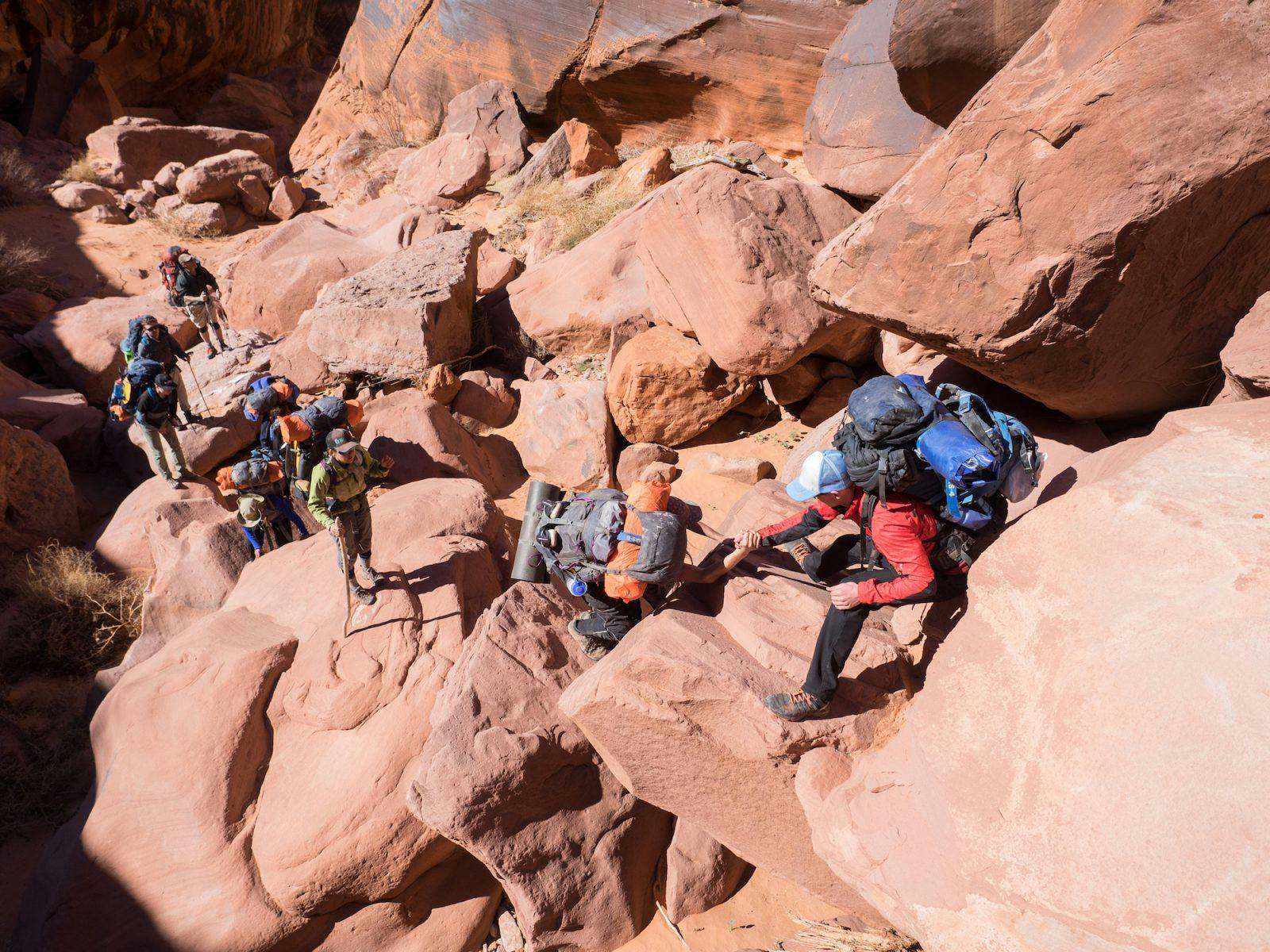
This next segment would involve three days of hiking. The goal for day one would be to hike ten miles up a box canyon and then find an old cowboy route to escape its impenetrable caramel colored walls. If the canyon ascent went as planned, we would be hiking through a vast dome land and across a desert plateau on day two. The third day would involve a long descent into yet another seldom visited canyon which would lead us back to the water’s edge and our final packrafting segment of the trip. In total, we hoped our feet and backs were strong enough to cover 40 miles of off trail terrain.
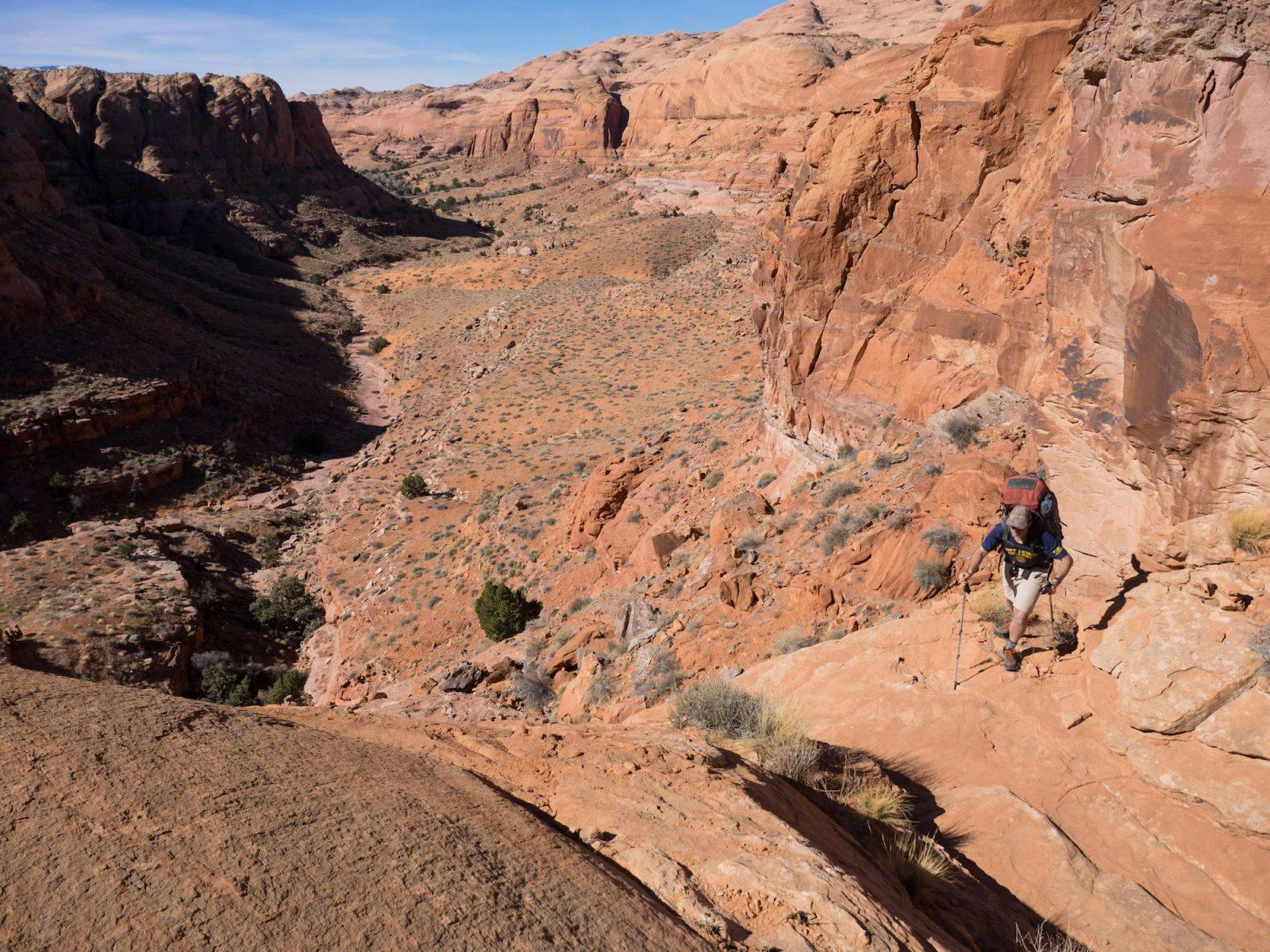
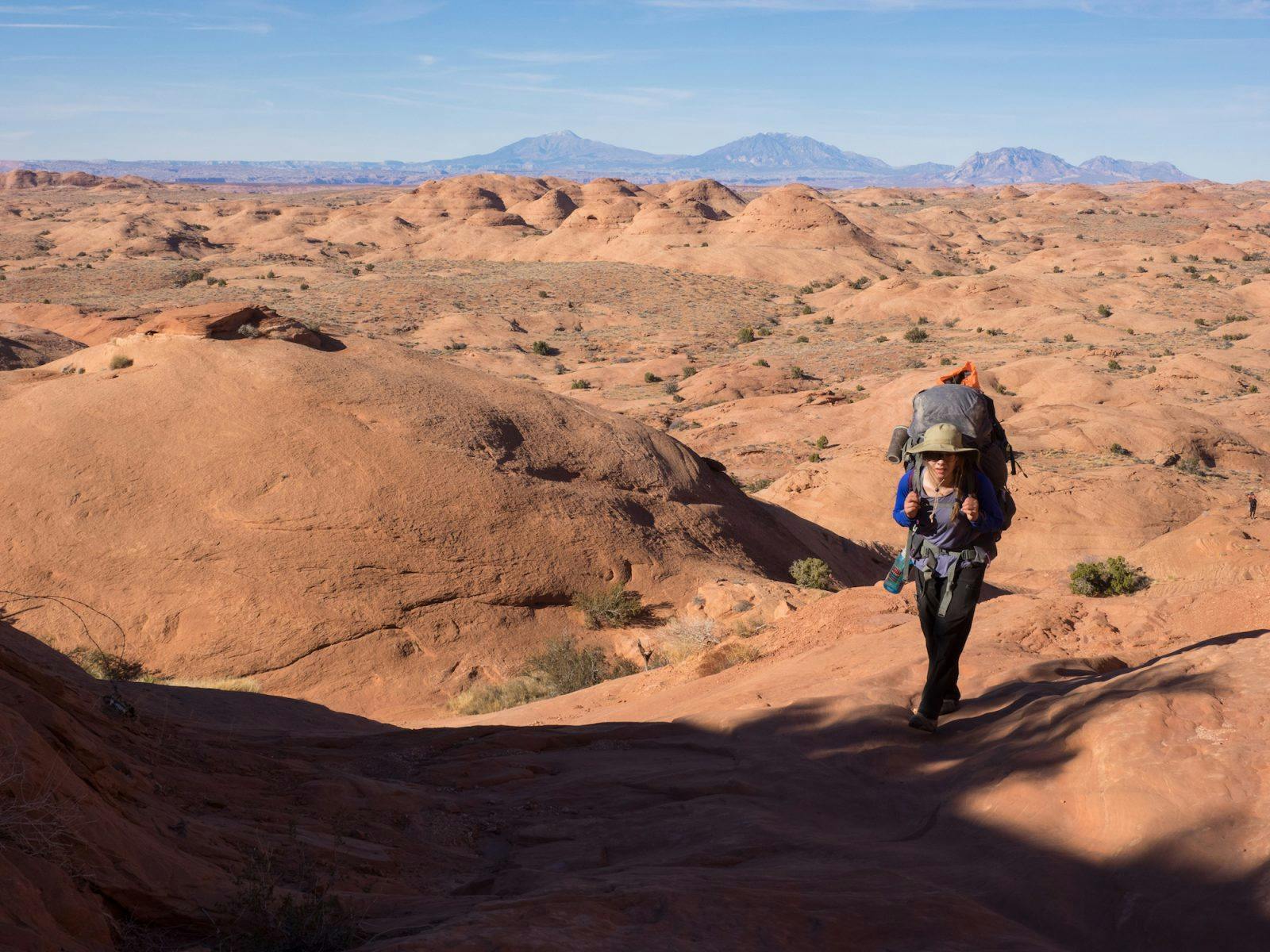
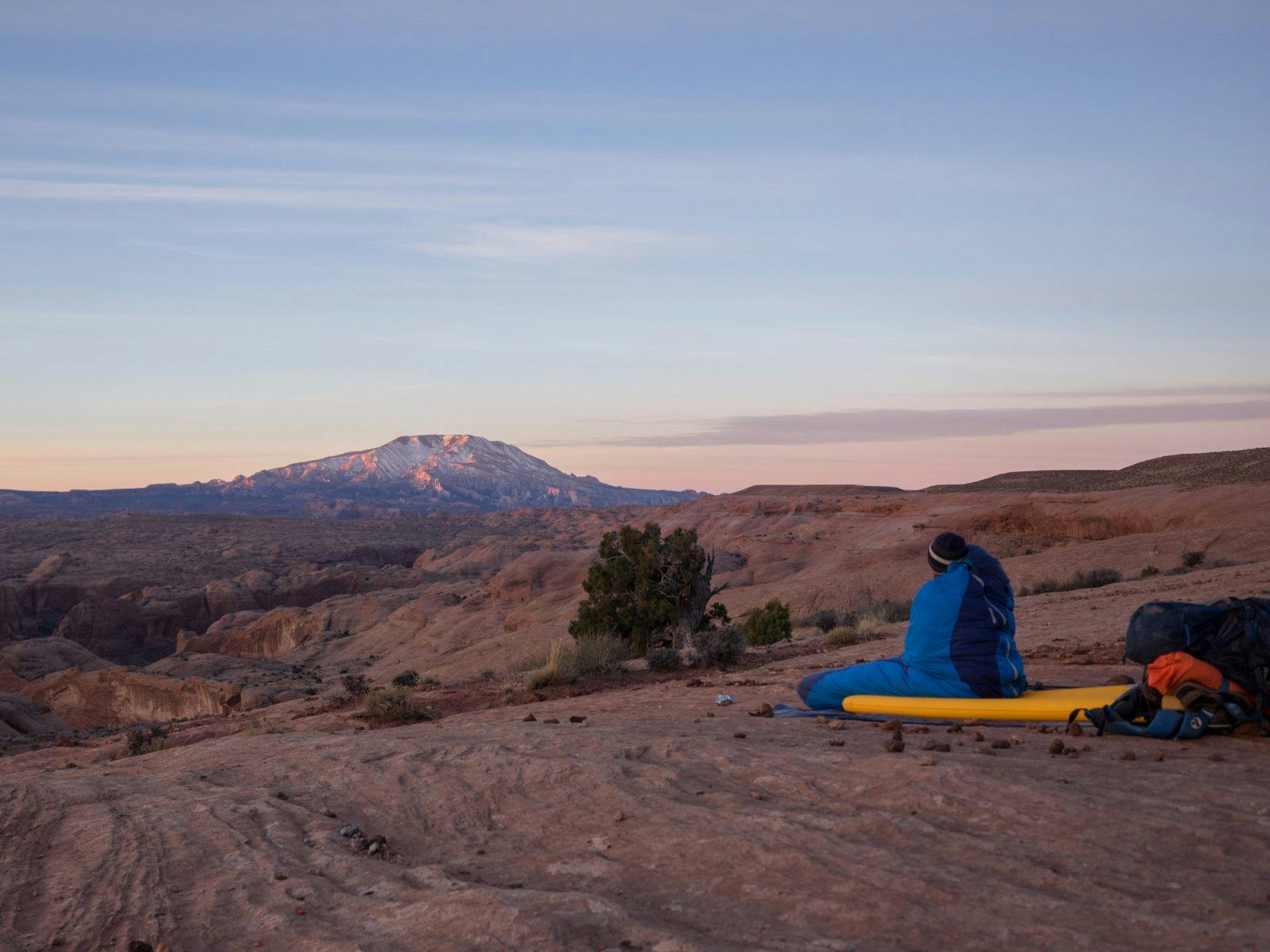
The light of day was fading into a pale blue as dusk descended upon the canyon. Looking overhead, I glimpsed the first bats of the evening departing their lairs for their night’s hunt. Behind me, our team was strewn out up the canyon with heads bowed in resolve to finish the day strong. They were wasted from their efforts, struggling with both the physical and mental pain brought on by being pushed to their limits. Feet were blistered. Shoulders were raw from pack straps. Morale was falling. I barged forward through the brush seeking some sign of the vast body of water that I knew was close by. We had been on the move for the past ten hours, attempting to reach day three’s goal. Just as I heard a depleted call to make camp echo among the canyon walls, I found it… the elusive water’s edge. Wahoo! We had made it.
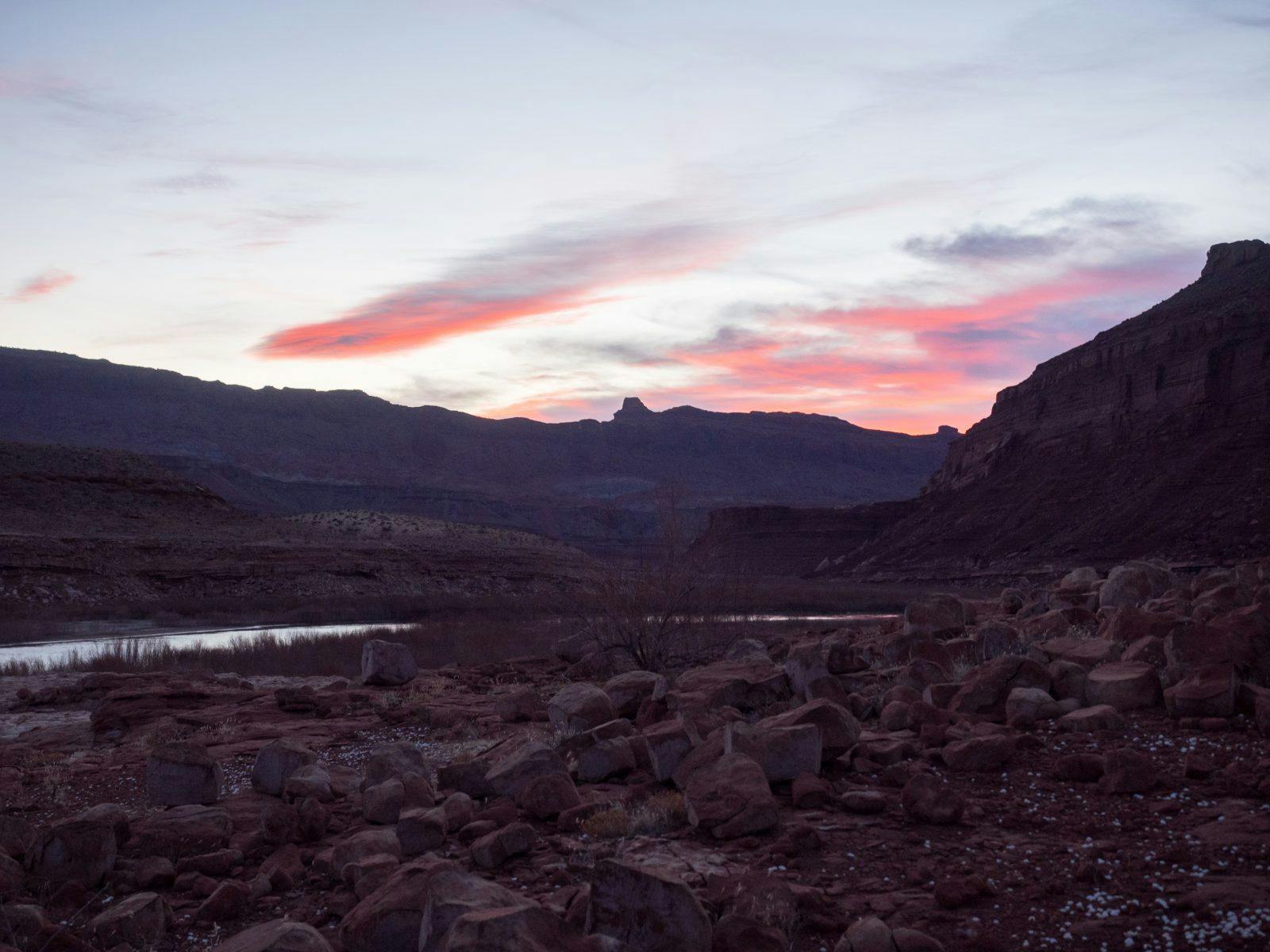
For ten years I have shared an office and worked five feet away from T$. We have spent more time near each other and venturing in the wilds than we have with our significant others. After nearly 18 years of working at OP, he is taking the next step in his life’s journey and leaving the organization that he has helped to build into a world-class collegiate outdoor recreation program. His legacy will not be the equipment he purchased or the number of trips he developed and led, but rather, the number of students he has mentored and impacted during his career. As for me, I found a friend and kindred spirit when it comes to sharing our passion for wild places with future generations. This adventure would be our final hoorah together. One last time to push the envelope to see what was possible to accomplish with a group of college students. Our little program at a small little liberal arts college located in a small mountain town in a remote corner of Colorado has reputation for doing big things. I would argue that the reason for this lies in the program’s leadership and experience. Both T$ and I, and those before us, have and had a penchant for dreaming big and challenging the norm when it comes to working with students. Why couldn’t we climb with students above 20,000 feet? Why couldn’t we raft a significant whitewater river? Why couldn’t we ski off big peaks? Why? If you are not willing to answer the question, you will never find its answer. We are good at asking the questions, but more importantly, we are good at seeking the answers.
The stillness in the air was reflected in the glassy water in which we dipped our paddles. Silence reigned around us as we paddled towards our final canyon of the trip and thus, one last day of hiking. The ever-sacred, Navajo Mountain, towered over us. Just over seven days ago, our view of this wise old sentry was a soft bump on a distant horizon. Now, every detail from its canyon fissured base to its snowcapped summit stood prominent. With each stroke forward, my mind began to relax and the realization that we were going to make it crept into my consciousness. No navigation errors. No major injuries. No mental breakdowns. What started as a group of individuals who were dropped at the end of a lonely road, finished as a close-knit team having battled the elements and 80 miles of uninhabited desert country to be reunited with a van. Moving through terrain of such stark contrast and beauty by the human powered means of packraft and foot can have profound effects on one’s being. Limits were expanded. Lessons were learned. Friendships were made. A “Desert Wander” was accomplished.
Special thanks to Alpacka Raft for support of OP and for the loner Caribou—the latest addition to their line-up. This vessel is made for adventures such as the Desert Wander, when loading up the bow with a bike or a heavy pack is a must.
Visit the Fort Lewis College Outdoor Pursuits program websitefor more information, or follow them on Instagram. Follow Brett Davis on Instagram at or on his website, thelessoncollective.com.
